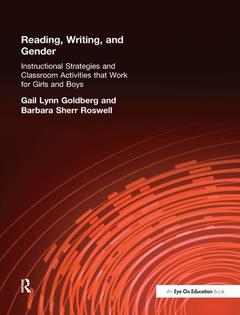Reading, Writing, and Gender
Auteurs : Goldberg Gail Lynn, Roswell Barbara

Date de parution : 07-2017
21x28 cm
Disponible chez l'éditeur (délai d'approvisionnement : 14 jours).
Prix indicatif 174,18 €
Ajouter au panierThèmes de Reading, Writing, and Gender :
Mots-clés :
expressive; persuasive; selections; flip; chart; text; features; graphic; organizer; peer; Large Scale Assess; Ifeoma Onyefulu; Wagon Train; David King; Selected Response Items; School Library Journal; Main Character; Bug's Life; Museum Of Natural History; Complex Text Format; Hm; Wo; Ro Om; Os; Expressive Writing; Follow; Persuasive Writing; Grandma; Junior Great Books Program; Average Performance Index; Graphic Organizer; AAUW Report; Camp Green Lake; Dance Floor; High SAT Score


